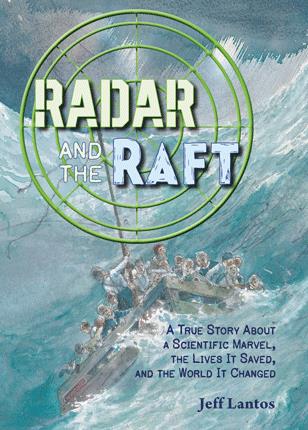| Radar and the raft : a true story about a scientific marvel, the lives it saved, and the world it changed Author: Lantos, Jeff | ||
| Price: $23.78 | ||
Summary:
Readers are first invited to follow scientific discoveries in the 1700s that eventually lead to the creation of radar, and are then immersed in a world where World War II rages. German U-boats sink ships, and the ship just hit has an American mom and her two young kids aboard. Now Ethel, Robert, and Mary Bell are on a raft with fourteen other people, floating in the ocean and hoping for rescue.
Reviews:
Kirkus Reviews (+) (08/15/24)
School Library Journal (09/13/24)
The Hornbook (00/11/24)
Full Text Reviews:
School Library Journal - 09/13/2024 Gr 5 Up—"How did the Bell kids and their mom end up on a sun-baked raft in the vast ocean in the middle of a world war?" This preliminary question leads to 15 deeply researched and alternating chapters packed with history, science, and story. American missionary Ethel Bell's departure from New York, heading for Africa's Ivory Coast in 1938, and her flight from Nazi-invaded Africa in 1942 become a gradually unwinding tale of horrendous shipwreck and survival. This recounting of an American cargo ship torpedoed by a German U-boat in the South Atlantic will demonstrate the enormous value of radar. The wartime scene shifts abruptly to Bologna, Italy, in the 1700s and the electricity experiments of Luigi Galvani and Alessandro Volta that began the long development of radar and microwave technology. Radar will eventually rescue the raft survivors and stymie Germany's war activity. The back-and-forth accounts of shipwreck survivors and famous scientists cover a great deal of geography, but there are no maps. Full-page illustrations—portraits of scientists and impressionistic watercolor raft scenes—introduce each chapter. Smaller photographs and invention diagrams appear along with many additional story and information bits framed as torn notebook pages. There are also lengthy source notes and a very long selected bibliography of adult materials. This complex format may frustrate and confuse many middle grade readers; they may elect to read just one section of chapters for research. VERDICT This goes on the science shelves and will require patient reading.—Margaret Bush - Copyright 2024 Publishers Weekly, Library Journal and/or School Library Journal used with permission.




